Years of service 1936–451956–75 | Name Gunther Rall | |
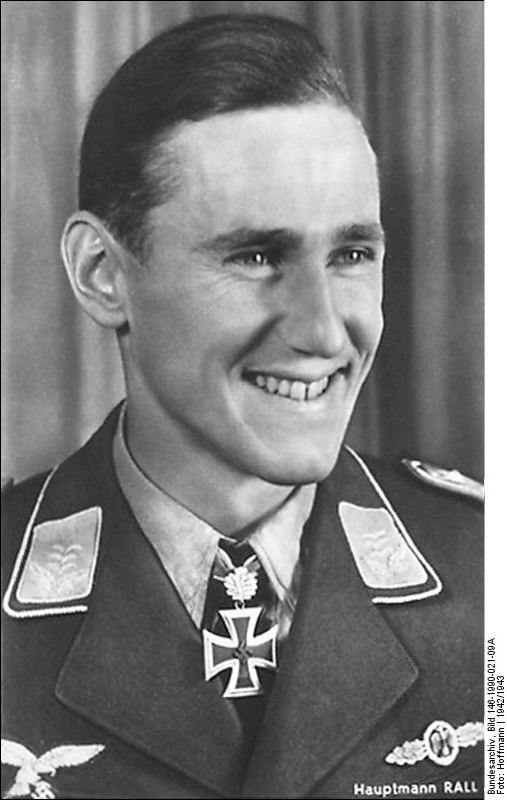 | ||
Unit JG 52, JG 11 and JG 300 | ||
Video from the past 11 g nther rall luftwaffe ace interview
Günther Rall (10 March 1918 – 4 October 2009) was a German lieutenant-general, the third most successful fighter ace in history and later head of the West German Luftwaffe during the Cold War.
Contents
- Video from the past 11 g nther rall luftwaffe ace interview
- Bf109 ace g nther rall interview
- World War II
- Eastern Front
- Defence of the Reich
- After the war
- Awards
- References
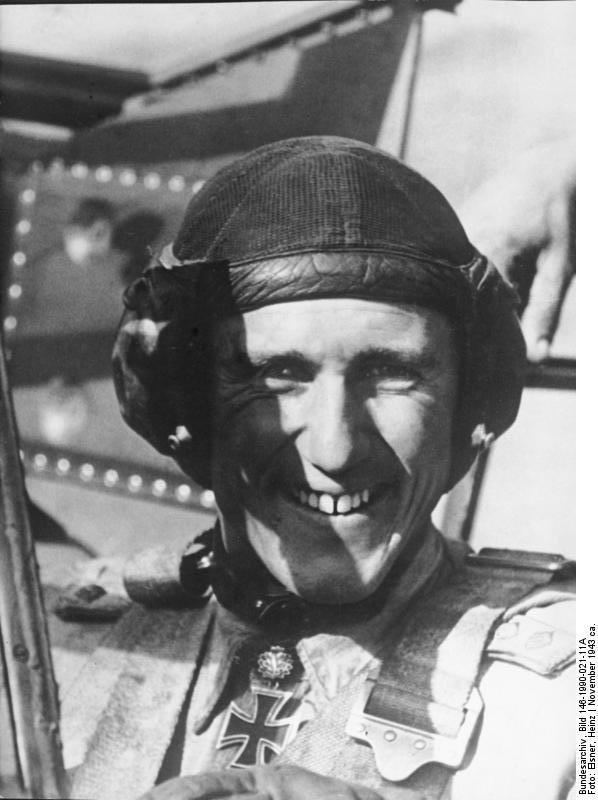
He achieved a total of 275 victories during World War II: 272 on the Eastern Front, of which 241 were against Soviet fighters. He flew a total of 621 combat missions, was shot down eight times and was wounded three times. He fought 1940 in the Battle of France, the Battle of Britain, 1941 in the Balkan Campaign and over Crete. He began the conflict as a Second Lieutenant, and was a Major and Geschwaderkommodore of JG 300 when the war ended. He claimed all of his victories in the Messerschmitt Bf 109.

In 1956 he again became a pilot in the West German Luftwaffe, and from the 1960s he held increasingly prominent command posts. He served as Inspector of the Air Force 1971–1974 and as the German Military Representative to the NATO Military Committee 1974–1975. He attended the NATO Defense College in 1964.
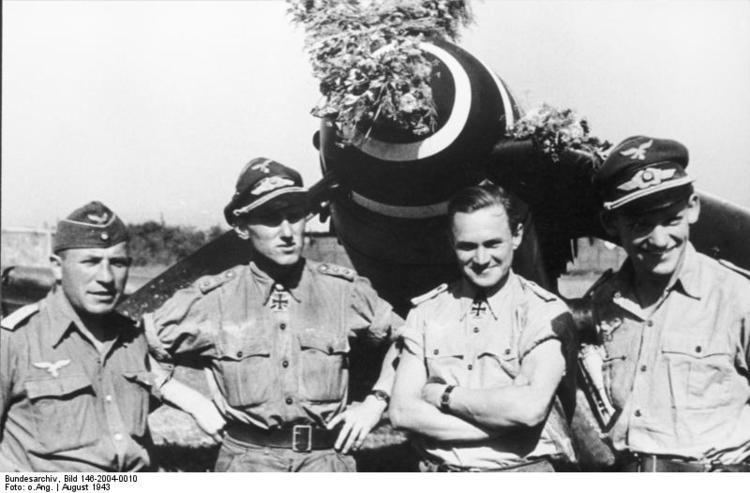
Bf109 ace g nther rall interview
World War II
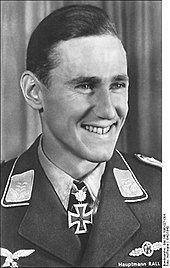
Rall was posted to Jagdgeschwader 52 of the Luftwaffe in July 1938. He first saw combat during the Battle of France, and on 12 May 1940, he scored his first victory. Three French Curtiss H75-C1 (P-36 Hawk) fighters were attacking a German reconnaissance aircraft at a height of 26,000 feet. Rall "bounced" them and shot down one. He later said:"I was lucky in my first dogfight, but it did give me a hell of a lot of self-confidence... and a scaring, because I was also hit by many bullets."
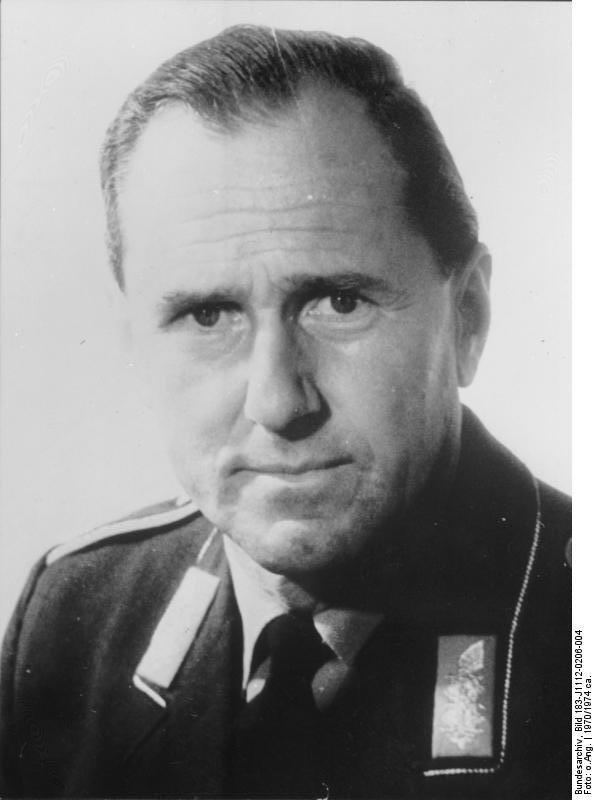
Later JG 52 was moved to Calais where it took part in the Battle of Britain. Due to heavy losses in the unit, he was given command as a Staffelkapitän of 8./JG 52 on 25 July 1940 and was promoted to Oberleutnant a week later, on 1 August 1940. He fought with JG 52 over Britain until the unit was withdrawn to replace losses. Rall then took part in the Balkans Campaign in the spring of 1941. He also partook in Operation Merkur, the airborne invasion and subsequent Battle of Crete in June 1941. After the successful conclusion of Merkur, JG 52 was transferred back to Romania to help defend the oil fields there from Soviet bombers.
Eastern Front
During Operation Barbarossa, Rall scored his third, fourth and fifth victories in three days of June 1941. During a five-day period, Rall and his Staffel destroyed some 50 Soviet aircraft. He had 12 victories in October. JG 52 was then attached to the operations of Army Group South and continued operating on the southern flank of the Eastern Front.
On 28 November 1941 Rall scored his 37th victory, but was himself shot down. He tried to fly to the German lines with a damaged engine, but he crash landed and was knocked out. A German tank crew rescued him from the wreck. X-rays revealed he had broken his back in three places. Doctors told Rall he was finished as a pilot and transferred him to a hospital in Vienna in December 1941. Despite the diagnosis, which said he would not be able to walk again, Rall defied the odds and returned to combat a year later. During his treatment he met a Dr. Hertha Schön, whom he later married in 1943.
He came back to its 8./JG 52 on 28 August 1942. From August to November Rall claimed another 38 victories, bringing his total to 101. On 3 September 1942, Rall was awarded the Knight's Cross of the Iron Cross. On 22 October 1942, Rall was credited with his 100th aerial victory. He was the 28th Luftwaffe pilot to achieve the century mark. On 26 November 1942 he was given the Oak Leaves to his Knight's Cross of the Iron Cross by Adolf Hitler personally. In April 1943, he was promoted to Hauptmann and on the 20th of that month scored the Geschwader's 5000th kill. He was appointed Gruppenkommandeur of III./JG 52 on 6 July 1943. On 1 November 1943, Rall was promoted to major, a rank he retained until the end of the war.
"Defence of the Reich"
On 19 April 1944, Rall was transferred to Jagdgeschwader 11 (JG 11), where he took up position as Gruppenkommandeur of II./JG 11. JG 11 was tasked with Reichsverteidigung (Defence of the Reich) and Rall led his unit against the bomber fleets of Eighth Air Force. On 12 May 1944, Rall was leading a Staffel of Bf 109s and bounced a flight of three P-47 Thunderbolts led by Col. Hubert Zemke, with Rall shooting down two Thunderbolts. His own squadron were then bounced by other P-47s arriving at the engagement, and he was shot down by pilots of the 56th Fighter Group. Rall had his left thumb shot off and was hospitalized for many months because of the onset of infections.
His last posting was with Jagdgeschwader 300 (JG 300), operating from a variety of airfields in southern Germany during the last months of the war. Lack of supplies prevented most planes from going on missions, and the fast progress of the Allies forced his squadron to move several times and it is unlikely that he saw much combat action during this period. Rall said of the campaign of 1943–1945: "In my experience, the Royal Air Force pilot was the most aggressive and capable fighter pilot during the Second World War. This is nothing against the Americans, because they came in late and in such large numbers that we don't have an accurate comparison. We were totally outnumbered when the Americans engaged, whereas at the time of the Battle of Britain the fight was more even and you could compare. The British were extremely good."
After the war
Whilst in a prisoner of war camp near Heidelberg, Rall was approached by the Americans who were gathering Luftwaffe pilots who had experience with the Messerschmitt Me 262 fighter. Rall was transferred to Bovingdon near Hemel Hempstead. Rall was then based at RAF Tangmere, where he met the RAF ace Robert Stanford Tuck, with whom he reportedly became close friends.
Rall rejoined the newly established West German military in 1956, after meeting a wartime friend and Luftwaffe pilot who encouraged him to return to flying. He joined the new German Air Force. One of his tasks was to oversee modifications to the F-104 fighter to comply with the requirement of the Bundeswehr, leading to the F-104G version. He insisted on the replacement of the ejection seat due to safety concerns. From 1 January 1971 to 31 March 1974, he held the position of Inspector of the Air Force and from 1 April 1974 to 13 October 1975, he was a military attaché with NATO.
His enforced retirement in 1975 was as a result of a controversial three-week visit to South Africa where he hosted meetings with South African politicians, of which his Air Force superiors claimed to be unaware. The "private" nature of this visit was later publicised by German weekly magazine Stern. South Africa, despite its apartheid regime, was seen as strategically important to NATO and although the visit was thought to be officially sanctioned, the political embarrassment following the concerted press campaign meant Defence Minister Georg Leber was forced to retire Rall in October 1975.
By the end of his career he attained the rank of Generalleutnant. In 2004 he wrote his memoir, Mein Flugbuch ("My Logbook"). Rall was interviewed in documentaries such as Thames Television's The World at War, and was a contributor to the Wings documentary television series produced by the Discovery Channel. Rall died at his home in Bad Reichenhall on 4 October 2009, aged 91, after suffering a heart attack two days earlier.
